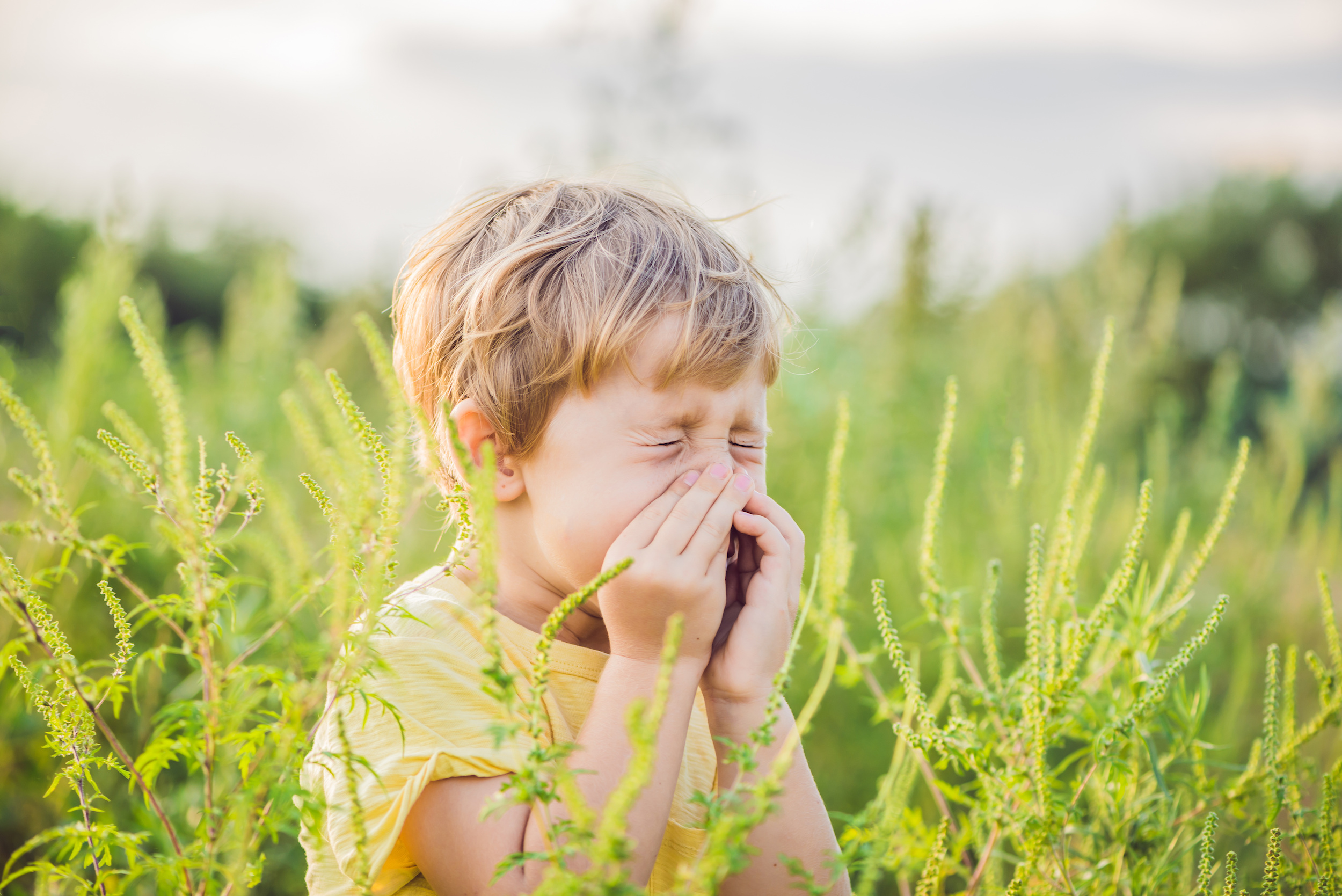The changing of seasons often means a rise in airborne allergens. While many people typically associate pollen and allergies with springtime, there are many aggressive forms of allergens in the air as summer transitions into fall. Scientists have also speculated that global warming has lengthened pollen and allergen seasons, making having a pollen allergy even more difficult. One of the most common allergens that comes with the transition of summer to fall is ragweed and it can wreak havoc for those that are sensitive to fall-time allergens.
What Is Ragweed?
Ragweed is a specific type of weed that grows in various locations across the United States. It produces a fine pollen that is easily aerosolized into the surrounding environment. There are currently 17 different types of ragweed that can produce allergic and asthmatic reactions in sensitized individuals.
Ragweed is typically the most potent from 10 am until 3 pm starting August and lasting through October (1st frost). Exposure to ragweed can cause the following symptoms:
- Stuffy nose
- Runny nose
- Itchy eyes
- Asthma symptoms
If you know that you are susceptible to seasonal allergies, it may be beneficial for you to check daily pollen counts to make sure that you can change or avoid plans on days where there are excessive allergens in the air.
What You May Not Know About Ragweed
When it comes to allergens, most people understand the ins and outs of pollen but may not know a lot about ragweed. Some facts you may not know about ragweed include:
-
It grows in almost every state
In the United States, every state has some form of ragweed apart from Alaska. Alaska has remained unaffected by ragweed, that doesn’t mean it couldn’t develop a ragweed population in the future, though.
-
It can travel pretty far
Traces of ragweed allergens have been found 400 miles into the ocean and away from land. Spores are likely to travel far away from the original ragweed plant.
-
Your body may mistake other substances for ragweed
There are many plants that your body may mistake for ragweed including sunflowers, sage, rabbitbrush, and mugwort. Additionally, some foods that may irritate those with a ragweed allergy are cantaloupe, bananas, watermelon, and sunflower seeds.
-
Mid-September is peak ragweed season
For most states, ragweed begins to emerge from August to September. If you have a serious allergic reaction to ragweed it is probably best to figure out when the peak emergence time is for your area.
-
Wearing a mask can reduce the effect of ragweed
Wearing a mask outside, especially during peak ragweed season, can lessen the amount of ragweed that enters your body through your throat and nose. On days where the pollen count is high, a mask can help protect you if you need to leave the house.
-
Immunotherapy may help relieve symptoms
There are many immunotherapy options for those who have serious or severe allergic reactions to pollen and other airborne allergens. Many people have found lasting relief from their allergies by undergoing subcutaneous or sublingual immunotherapy.
-
It can enter your home
Similar to other kinds of pollen, ragweed can easily attach to your clothes or come in through your home’s doors and windows. In order to reduce exposure in your home, get a quality air filter to remove pollen from your home’s air.
If you are struggling with your ragweed allergies this upcoming season, contact your local allergist for help controlling your symptoms.

